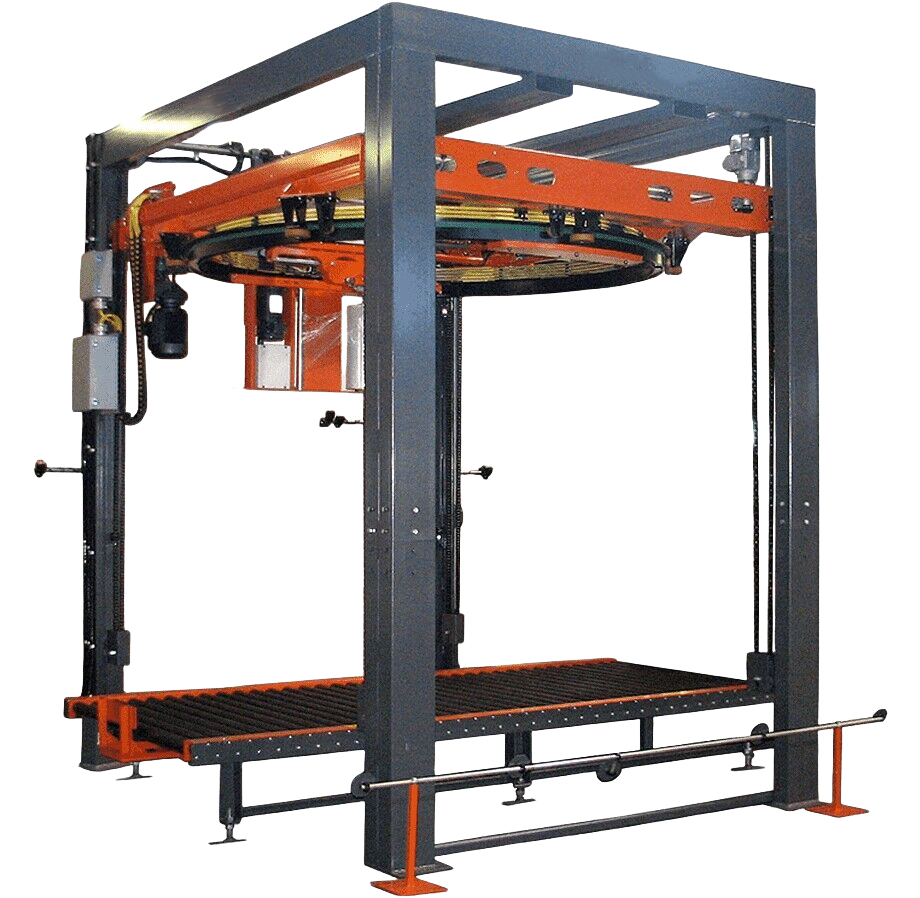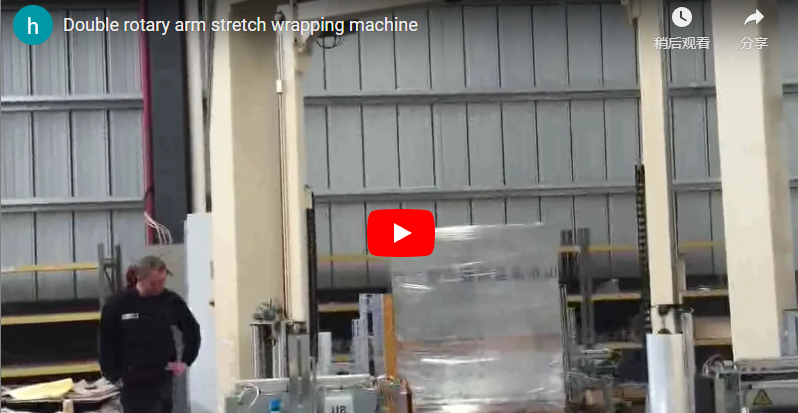Mastering the A200 Stretch Wrapper: Operation, Technical Specs, and Shop Floor Insights
In any fabrication shop, warehouse, or distribution center, the final step of securing goods onto a pallet is critical. Improperly wrapped loads can lead to product damage during transit, safety hazards, and ultimately, unhappy customers. The A200 stretch wrapping machine stands as a reliable workhorse designed to automate and optimize this crucial process, ensuring load integrity and boosting operational efficiency.
This article dives into the practical operation of the A200, explores its key technical features, and offers insights gleaned from real-world use to help you maximize its value in your facility.
Visual Guide: Watch the A200 stretch wrapper in action.
1. Understanding the A200 Stretch Wrapping Machine: Core Components
The A200 is typically a semi-automatic turntable stretch wrapper. Its design focuses on simplicity, durability, and consistent performance. Key components generally include:
- Turntable: Where the pallet load is placed for rotation during the wrapping cycle.
- Film Carriage: Holds the roll of stretch film and applies it to the load as the mast moves vertically. This often includes a pre-stretch mechanism to maximize film efficiency.
- Mast: The vertical structure that guides the film carriage up and down the height of the load.
- Control Panel: Allows operators to set parameters like wrap counts (top/bottom), turntable speed, carriage speed, and initiate the wrapping cycle.
2. Essential A200 Operation: Step-by-Step
Operating the A200 is designed to be straightforward, allowing personnel to become proficient quickly. Here’s a typical workflow:
- Load Placement: Carefully place the palletized load onto the center of the turntable using a forklift or pallet jack. Ensure the load is stable and within the machine's weight and size limits.
- Film Attachment: Pull out the leading edge of the stretch film from the carriage and securely tuck it into the base of the pallet or under a layer of product. A good initial attachment prevents the film from detaching during the cycle start.
- Cycle Initiation: Select the desired wrapping program or parameters on the control panel (e.g., number of top and bottom wraps, film tension). Press the start button to begin the automated wrapping cycle.
- Wrapping Process: The turntable rotates the load while the film carriage travels vertically along the mast, applying the stretch film according to the programmed settings. The machine typically wraps upwards and then downwards to ensure full coverage.
- Film Cut & Removal: Once the cycle is complete, the machine stops. Manually cut the film tail from the carriage and smooth it against the load. Carefully remove the securely wrapped pallet from the turntable.

3. Technical Deep Dive: A200 Key Specifications
Understanding the machine's capabilities is crucial for proper application. While specific configurations can vary, typical A200 specifications often include:
- Turntable Diameter: Commonly around 1500mm (59") to 1650mm (65").
- Maximum Load Weight: Typically rated for loads up to 1500kg (3300 lbs) or 2000kg (4400 lbs).
- Maximum Load Height: Often accommodates loads up to 2100mm (82") or 2400mm (94").
- Film Carriage System: Frequently features a powered pre-stretch system (e.g., up to 250% or 300%), significantly reducing film consumption compared to manual wrapping or basic mechanical brakes.
- Turntable Speed: Adjustable, often ranging from 3 to 12 RPM.
- Film Carriage Speed: Adjustable to control the overlap of the film layers.
- Control System: Usually PLC-based for reliability, with user-friendly interface for parameter adjustments.
- Power Requirements: Varies by region and configuration (e.g., 220V/1Ph/60Hz or 380V/3Ph/50Hz).
- Optional Features: Depending on the supplier and model variant, options might include:
- Integrated Weighing Scale: Combines wrapping and weighing into one step, streamlining logistics and ensuring accurate shipping data (as discussed in the original post content). This eliminates double-handling and saves valuable floor space.
- Ramp: For easier loading with manual pallet jacks.
- Top Platen: To stabilize very tall or light, unstable loads during wrapping.
- Different Mast Heights: To accommodate taller-than-standard loads.
4. Getting the Most Out of Your A200: Tips from the Floor
Based on hands-on experience, here are some practical tips to maximize the A200's performance and longevity:
- Dialing in Film Tension & Pre-Stretch: Don't just set it and forget it. Adjust based on the load type and stability. Too little tension compromises load security; too much can crush fragile products or waste film. Leverage the pre-stretch feature correctly – it’s your biggest cost-saver.
- Consistent Load Placement: Centering the load on the turntable is key for a balanced wrap and prevents unnecessary stress on the turntable motor and bearings.
- Choosing the Right Wrap Pattern: Use sufficient top and bottom wraps (often 3-5) to lock the load to the pallet. Adjust carriage speed to ensure proper film overlap (typically 30-50%) for vertical integrity.
- Regular Film Threading Checks: Ensure the film is correctly threaded through the rollers in the carriage, especially after changing rolls. Incorrect threading negates pre-stretch benefits and can lead to film breaks.
- Routine Preventative Maintenance: Keep the machine clean, especially the turntable and film carriage rollers. Check chain tensions (if applicable) and listen for any unusual noises that might indicate a need for service.
- Operator Safety: Ensure operators are trained on safe operating procedures, including keeping clear during the wrap cycle and proper load handling techniques around the machine.
5. Benefits Beyond the Basics: Why the A200 Makes Sense
Investing in an A200 stretch wrapper delivers tangible advantages:
- Enhanced Load Stability & Security: Automated wrapping provides consistent tension and coverage, significantly reducing the risk of shifting or collapsing loads during handling and shipping compared to inconsistent manual wrapping.
- Significant Labor & Time Savings: Frees up personnel from the physically demanding and time-consuming task of manual wrapping, allowing them to focus on other value-added activities. Wrap cycles are typically fast (1-2 minutes).
- Optimized Film Consumption: The powered pre-stretch system can yield 2-3 times the length from a roll of film compared to manual application, leading to substantial savings on consumables.
- Improved Professional Presentation: Uniformly wrapped pallets present a more professional image to customers.
- Potential for Integrated Weighing: If equipped with the scale option, it provides accurate weight data for manifests and shipping cost calculations directly within the wrapping process, enhancing logistical efficiency.
6. Integrating the A200 into Your Workflow
The A200's footprint is relatively compact, making it easy to integrate into most end-of-line packaging areas. Consider workflow: ensure clear access for forklifts or pallet jacks to load and unload the turntable. Position it strategically between production/picking areas and the shipping dock to minimize travel distance.
Conclusion: A Reliable Partner in Pallet Security
The A200 stretch wrapping machine is more than just a piece of equipment; it's a solution for achieving consistent load containment, reducing packaging costs, and improving overall operational efficiency. Its robust design, ease of use, and features like powered pre-stretch make it a valuable asset for any operation handling palletized goods. By understanding its operation, capabilities, and incorporating practical usage tips, fabricators and distributors can ensure their products reach their destination securely and cost-effectively.
For further details on stretch wrapping solutions:
https://www.fhopepack.com/Stretch_wrapping_machine.html
Contact us for inquiries:
info@fhopepack.com






